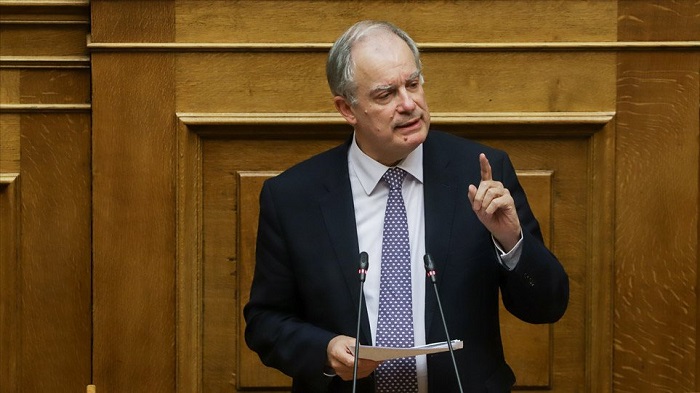
Greece’s Parliament elected Konstantinos Tasoulas as the next President of the Republic on Wednesday.
In the fourth round of voting, Tasoulas gained 160 votes in the 300-member chamber. He required 151 to be elected. All 156 MPs of the governing New Democracy party voted for Tasoulas, in addition to former PM Antonis Samaras and three independent lawmakers.
Tasoulas will be sworn in before the Parliament on March 13, 2025, when the term of the outgoing President, Katerina Sakellaropoulou, ends.
Biography of Konstantinos Tasoulas
Tasoulas was born in Ioannina, Greece on July 17, 1959. He studied at the Athens Law School of the National and Kapodistrian University of Athens and earned a law degree in 1981.
He also worked as a lawyer in Athens and London, while from 1981 to 1990 he was special secretary of Evangelos Averoff, before being elected mayor of Kifissia.
He holds the record as the Speaker of Parliament with the most votes; having been elected with a record 283 votes “for” (ND, Syriza, KINAL, EL, MeRA25), 15 votes “present” (KKE) and two abstentions (Dimitris Tzanakopoulos and Effie Achtsioglou).
It was also the first time a Speaker of Parliament was elected by open ballot.
The role of the President in Greece
The President of the Hellenic Republic, who has mostly a ceremonial role.
He or she regulates the functions of the institutions of the Republic according to Article 30, Paragraph 1 of the Constitution. However, the individual elected holds no actual executive powers.
The institution of the Presidency of the Hellenic Republic was established in 1975, one year after the restoration of democracy in Greece following the seven-year military dictatorship, which lasted from 1967 to 1974.
The President is elected by Parliament and serves a term of five years. He or she has the right to re-election only once.
Mitsotakis’ choice for Greek President
Prime Minister Kyriakos Mitsotakis announced his nomination of Tasoulas in January.
He said that Tasoulas is a widely accepted politician who was elected President of the Greek Parliament three times with the strongest majority in modern Greek history: with 283, 270 and 249 votes.
“His unifying spirit and virtues have been demonstrated by the impeccable manner in which he has, until now, directed the work of the Parliament in a very difficult party landscape,” Mitsotakis added.
He also addressed his decision to break with tradition by nominating someone from the governing majority, arguing that the key criterion is public trust. “Neither the different backgrounds of a president and a prime minister guarantee institutional balance, nor does their political alignment inherently create risks for the state,” he remarked.
Left-wing opposition parties criticized the nomination, accusing Mitsotakis of breaking the tradition of selecting a nonpartisan candidate.
“Mr Mitsotakis is making a purely partisan choice by selecting a sitting MP from the New Democracy party for the highest office. He acted unilaterally, breaking political traditions and exposing his deep political insecurity,” said PASOK spokesperson Kostas Tsoukalas.
SYRIZA also criticized Tasoulas’ candidacy, describing it as “narrowly partisan.” Party sources accused Mitsotakis of “instrumentalizing and subordinating the institution to address his internal party issues.”